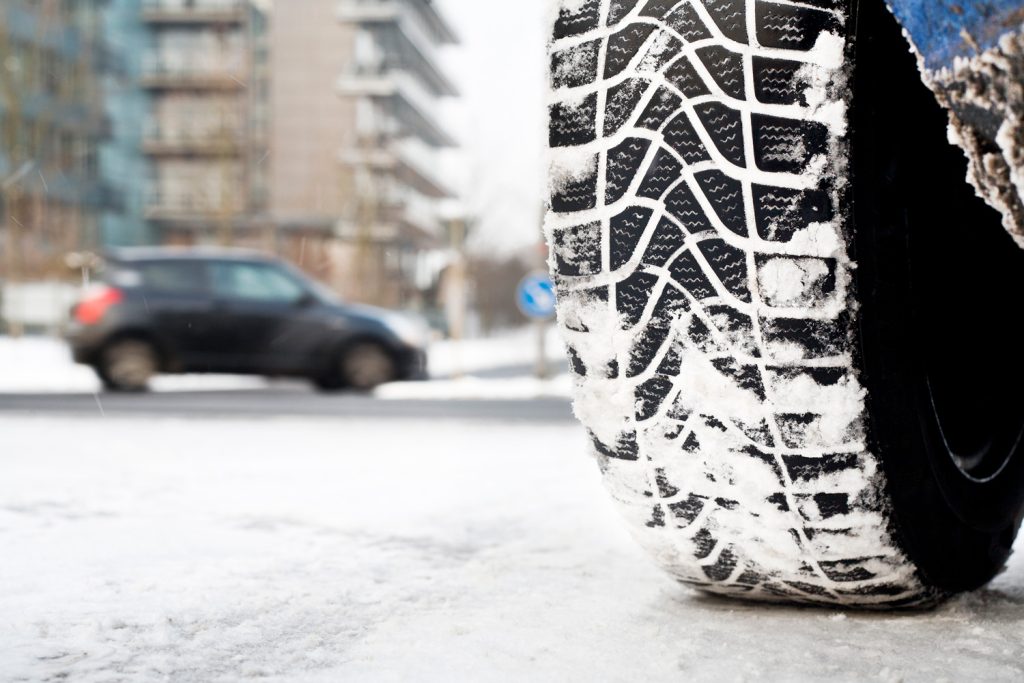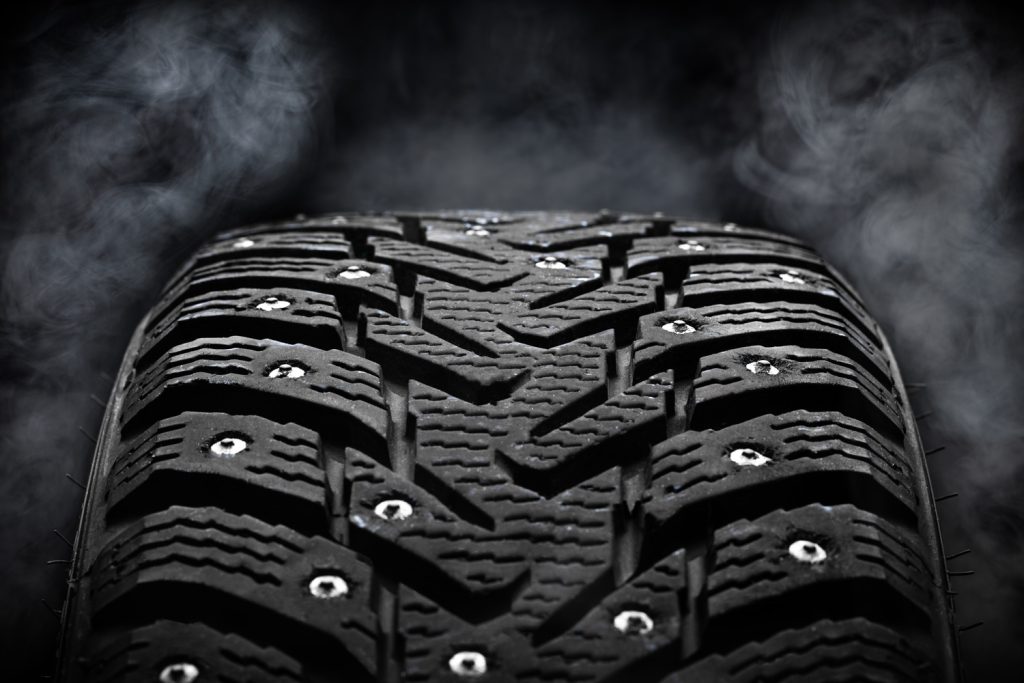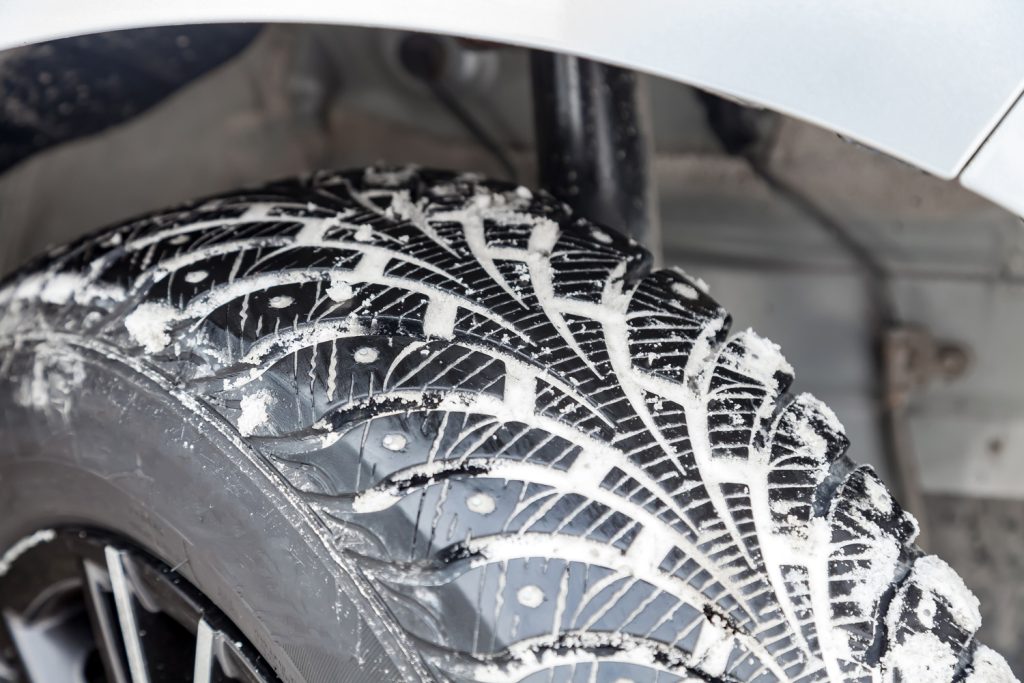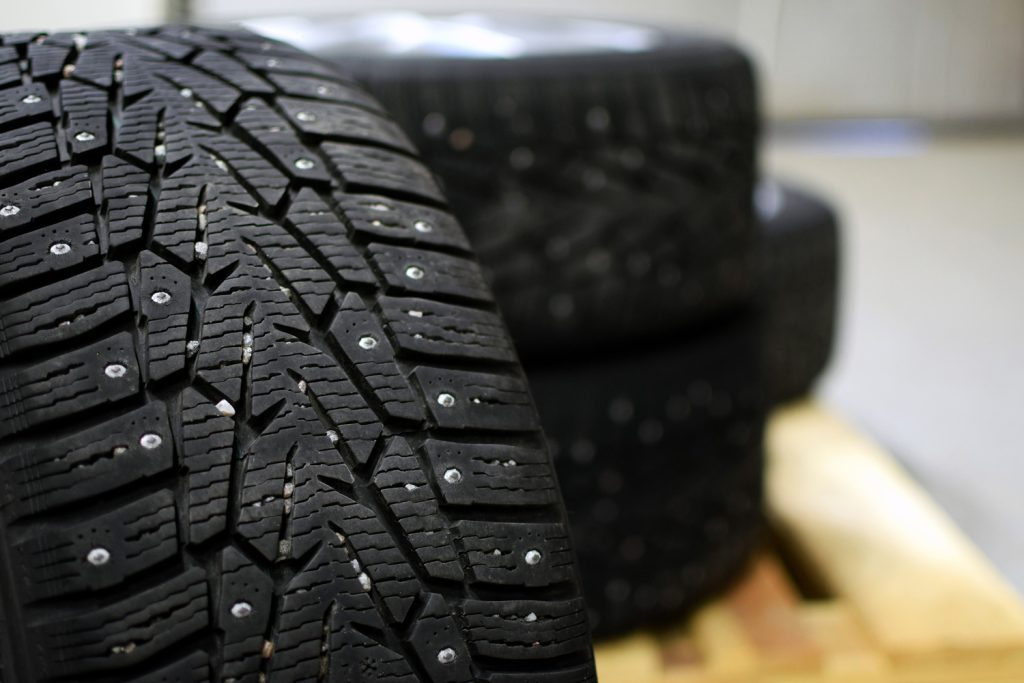Winter is around the corner, and you have new tires you want to stud for better traction on snowy roads. But, can you restud used tires or previously studded tires? To answer you, we have done in-depth research to provide you with the following facts.
No, you should not stud used tires or stud tires that have been studded before. You risk damaging your tires. It is recommended that you only stud new tires that have never been driven. The steps to do this are:
- Spray lubricant into each stud hole
- Attach stud gun to an air hose
- Load studs into the stud gun
- Stud the holes
Studding tires is quite easy. Continue reading to learn the steps. Also, learn the pros and cons of studded tires and how to install them correctly. Lastly, we shall provide information about how much it costs to stud your tires.
![closeup of snow tire with metal studs, which improve traction on icy surfaces, studded winter tyre, Can You Restud Tires? [And How To]](https://vehq.com/wp-content/uploads/2022/06/Can-You-Restud-Tires-And-How-To-683x1024.png)
How To Stud Tires

To begin with, there are three types of tires; all-season, un-studded winter tires, and studded winter tires.
Types of Tires
Let's go through each of them to give you a better understanding of the tires and why you should stud your winter tires:
All-Season Tires
These tires are most suitable for smooth and quiet rides. They do well on dry and wet pavement. They can offer a bit of traction while driving on light snow or during a winter storm.
However, they cannot provide traction in deep snow or on icy roads. Hence, you need to switch to winter tires when the temperatures are below 45 degrees Fahrenheit.
Un-Studded Winter Tires
These tires are manufactured for use on snow and icy roads. With the advancement in technology, the treads in un-studded winter tires remain soft and flexible even in cold weather.
This provides better traction, giving you more control of your vehicle while driving in extreme temperatures below 45 degrees Fahrenheit.
Studded Winter Tires
Studded tires add more traction than the un-studded winter tires. They give you much more control as you drive through the snow and on ice. You can buy un-studded tires and have them studded.
How to Stud Tires Yourself
If you prefer to do it yourself, the steps to follow are:
Spray Lubricant
Spray a tiny amount of lubricant into each hole. This assists in pushing the stud into the tire to allow it to settle in its correct position.
Connect Stud Gun To An Air Hose
Attach your stud gun to an air hose to let the pressure build up inside the air compressor.
Load Studs Into The Stud Gun
Some stud guns allow you to only load one stud at a time. This means you load one stud and then insert it into your tire.
But, you may have a stud gun you can load up to 20 studs or slightly more.
View this tire stud on Amazon.
You can load more if studs are small and fewer if they are larger. When you finish studding all of them, you can re-load with a similar amount of studs.
Stud The Holes
Your gun has a three-pronged tip which you will insert into each lubricated hole and squeeze the trigger. Don't allow the stud to go far inside the tire so far that it punctures the bladder. On the other hand, don't stick the studs too far out; otherwise, they can fly off as you drive. You should only see the pin of the carbide stud.
Also, the studs should be inserted straight into the tire and should not tilt more than 10 degrees. If the studs don't enter properly and are crooked, remove them using a needle-nose plier and try once more.
Stud all the holes one at a time. You can do this on either a tire that is air-filled or one that is not.
Why You Cannot Re-stud Tires
While it's technically possible to stud used or previously studded tires, it is considered unsafe.
First of all, winter tires have pre-set holes in them. Studs are manufactured in different sizes to match the different sizes of holes in the winter tires. Also, the tires are available in different tread depths. Therefore you cannot just fit any stud into any tire.
Your used tires will have lost some of their treads, making it challenging to install the studs properly. They are likely to fall out and cause damage to the roads or other cars close to yours.
Secondly, dirt and debris will get stuck in your tires as you drive. So, if you need to re-stud the tires, you must thoroughly clean each hole. This is time-consuming, and you may not manage to clean it well. And, even though you managed to, remember it might be unsafe to use the re-studded tires.
The Pros And Cons Of Studded Tires

The pros and cons of studded tires are discussed below:
Pros
Provides Stability While Driving
Studded tires provide traction, allowing you to control your car well while driving on ice or through the snow.
Great For Use During Winter
You will be able to navigate through in winter. You reduce the risk of getting stranded as you drive in areas that have snow or are snowing.
Suitable For Rapid Change In Weather
If you suspect the weather will change as you drive, you will have equipped your car with studded tires. Therefore, you will still get to your destination without issues.
Ability To Navigate On Slopes
You have an advantage when you drive up a slope during winter. You will be able to maintain your momentum as you drive up. Also, as you descend, your chances of slipping are minimal.
No Damage To Your Vehicle
The purpose of your studded tires is to help you navigate through icy and snowy roads. It is highly unlikely they can damage your vehicle.
Cons
It Might Be Illegal To Use Studded Tires
Studded tires can damage paved roads. That's why it may only be permissible during the winter season. Only a few states legalize the use of studded tires without limitations.
Noise As You Drive
The studs are metal and will produce noise on impact with the road, which could be a nuisance to you.
You Have To Maintain Two Sets Of Tires
You ought to stud your tires by the time the winter season arrives. And, when this season is over, you need to change back to all-season tires as per the law. So, in essence, you need to have two sets of tires.
More Expensive
Studded tires are twice as expensive as that of regular tires. This may not be worthwhile for you and your family.
You Might Not Get Studded Tires From The Factory
As it is, studded tires are expensive. Factories that manufacture tires may not necessarily sell them because they don't stud them. Instead, you have a higher chance of buying them from a retailer that might charge you more than the manufacturer.
You Must Stud All Four Tires
You cannot stud one, two, or only three of your tires as you will still be unable to control your car well. Therefore, stud all four tires for a better experience, stability, and control.
Driving Does Not Improve On Normal Roads
You can safely drive your car with studded tires on the road with ice or snow. However, this does not mean you can do so on wet or dry pavement. You have to change the tires back to regular.
The Cost Of Studding Tires

You will pay between $60 and $550 for un-studded winter tires. Compare this to un-studded tires, each costing between $100 and $150. The cost of studded winter tires ranges from $75 to $550.
It is much cheaper to stud the tires yourself. However, ensure to insert them correctly so that they can run efficiently and for your tires to last long.
In Closing

As winter approaches, fit your car with studded tires to provide traction while driving through snow and on ice. They are expensive, and it would be good to prepare early if you do not have a set yet.
To save on costs, you can stud the tires yourself. However, be careful to install the studs straight into the tire and not at an angle. Also, the studs should not be too far out as they can fall off as you drive. And, neither should you push them too deep inside because your tire could get damaged.
Despite the many benefits of studded tires, it is good to know the cons.
If you enjoyed reading this post, we have two more for you below:

